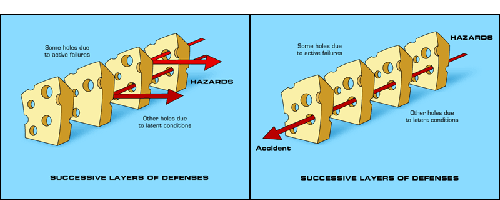Titanic Response
Our recent post Was the titanic sunk by a small key? elicited some great response from our readers. Surprisingly, the best ones had little to do with the titanic itself and more to do with the cause of all maritime incidents… the error chain. First a recap from the original post:
While some point to the ship’s excessive speed, the vessel’s design or the positioning of the ship’s compass as the cause of the incident the facts clearly show the titanic sunk as a direct result of the accident chain>. In other words the titanic sunk, not due to one large error but a combination of small errors that linked together caused the tragic circumstances. Remove one small link in the chain and the incident is avoided.
It is interesting to note that a string of small errors caused by human error is the cause of most large maritime incidents. The lesson to be learned….. next time you make a mistake aboard ship listen for the voice in the back of your mind and quickly ask yourself; is this an isolated incident or indication of larger problems?
Shrivan states; “Now I understand how important keys can be in ships” to which Fred Fry replies; “Keys are important. Keys are power!”
This comment reminded Jim of a quote from his Captain: “Give a man key with a clipboard and you’ll find out what kind of person he is. Give them in the morning and you’ll know by lunch.”
Things start to get serious around comment number 20 where Bob Couttie writes:
In the past I’ve used ‘error chain’ and ‘domino effect when discussing accidents but, at the risk of getting too theoretical I think both are inadequate since they are basically descriptions of single-point failure (A chain fails when a single link fails, a domino falls over when its neighbour hits it).
The best physical description I think is the wooden tower game, “Jenga” or “Topple” in which players take turns removing blocks from a stack. The first few extractions don’t do much harm but as the process continues the stack becomes more and more unstable until one reaches a point where removing any block at all will cause the stack to fall over.
If you think of the tower as ‘safety’ and the individual blocks as the elements, precautions, procedures that make up safety, you’ve got a fairly good visual model for how accidents happen.
Kennebec Captain replies in agreement and points us to this post on his blog:
A more helpful model is the Swiss Cheese Model first proposed by British psychologist James T. Reason (nice name!).
This site (Dukes.edu) has a nice graphic of the S.C. model.

The Swiss Cheese Model provide a positive method of reducing risk, rather then seeking to break some invisible chain, one simply adds layers, or increases the effectiveness of the existing layers (making the holes smaller). As an example, one could add a layer of crew training, or seek ways to improve the effectiveness of existing training, or use additional care during passage planning.
On a well run ship you can observe the Swiss Cheese Model in action Each near miss, representing a hole in one layer, is evaluated and if needed procedures are modified. Near misses, lessons learned, Bridge Resource Management, careful passage planning can all be seen as adding layers of cheese. Of course it may not be called that. Another name for the application of the Swiss Cheese model is – good seamanship.
So from the Titanic to Swiss Cheese I enjoyed the comments… thanks to all who participated!

Subscribe for Daily Maritime Insights
Sign up for gCaptain’s newsletter and never miss an update
— trusted by our 109,185 members

Get The Industry’s Go-To News
Subscribe to gCaptain Daily and stay informed with the latest global maritime and offshore news

 Join The Club
Join The Club






